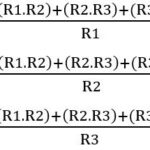What is Primary Cell in LTE?
Today, let’s dive into the concept of a Primary Cell in LTE. If you’ve been exploring LTE topics with us, you might already be familiar with the basic structure of LTE networks. The primary cell is a crucial element in LTE’s carrier aggregation and overall network performance, so it’s essential to understand its role and significance.
In LTE, the Primary Cell (PCell) refers to the first cell that a User Equipment (UE) connects to when it initially establishes communication with the LTE network. This primary cell is responsible for handling the main control and data communication for the UE. Think of the PCell as the starting point for your device’s communication within the LTE network, much like how a main server might handle the first connection request before being routed to other resources.
The role of the Primary Cell in LTE becomes especially important when carrier aggregation is in play. Carrier aggregation is a technique used in LTE-Advanced to combine multiple frequency bands, increasing the available bandwidth for faster data transmission. Within carrier aggregation, the PCell is the main carrier, while additional carriers are referred to as Secondary Cells (SCells).
Key functions of the Primary Cell (PCell):
- Initial Connection Setup: The PCell is the first cell the UE connects to for initial access and authentication in the LTE network.
- Control and Signaling: The PCell handles most of the control signaling and management for the connection, such as scheduling and power control.
- Connection Maintenance: The PCell is responsible for maintaining the ongoing connection between the UE and the network, ensuring that the data transfer remains uninterrupted.
- Carrier Aggregation Leader: In LTE-Advanced, when multiple carriers are used (as in carrier aggregation), the PCell is the primary carrier that coordinates data transmission across additional secondary carriers (SCells).
One key thing to remember is that the Primary Cell is responsible for much of the control-plane signaling, meaning it handles tasks such as resource allocation and connection management. This makes the PCell integral to the user experience, ensuring that your device maintains an active connection to the LTE network and that data is transferred efficiently.
In the previous articles, we’ve discussed how LTE networks handle data, and the Primary Cell plays a critical role in this process. As we know, a well-established initial connection and effective communication are vital for fast, reliable data transfer. The PCell ensures that these operations happen smoothly, particularly in the context of dynamic environments where network conditions can change frequently.
In summary, the Primary Cell in LTE is a critical part of the network that helps to establish, manage, and maintain the connection between the User Equipment (UE) and the LTE network. It ensures that data can flow efficiently between the user and the network, especially when carrier aggregation is used to enhance network capacity and speed.


